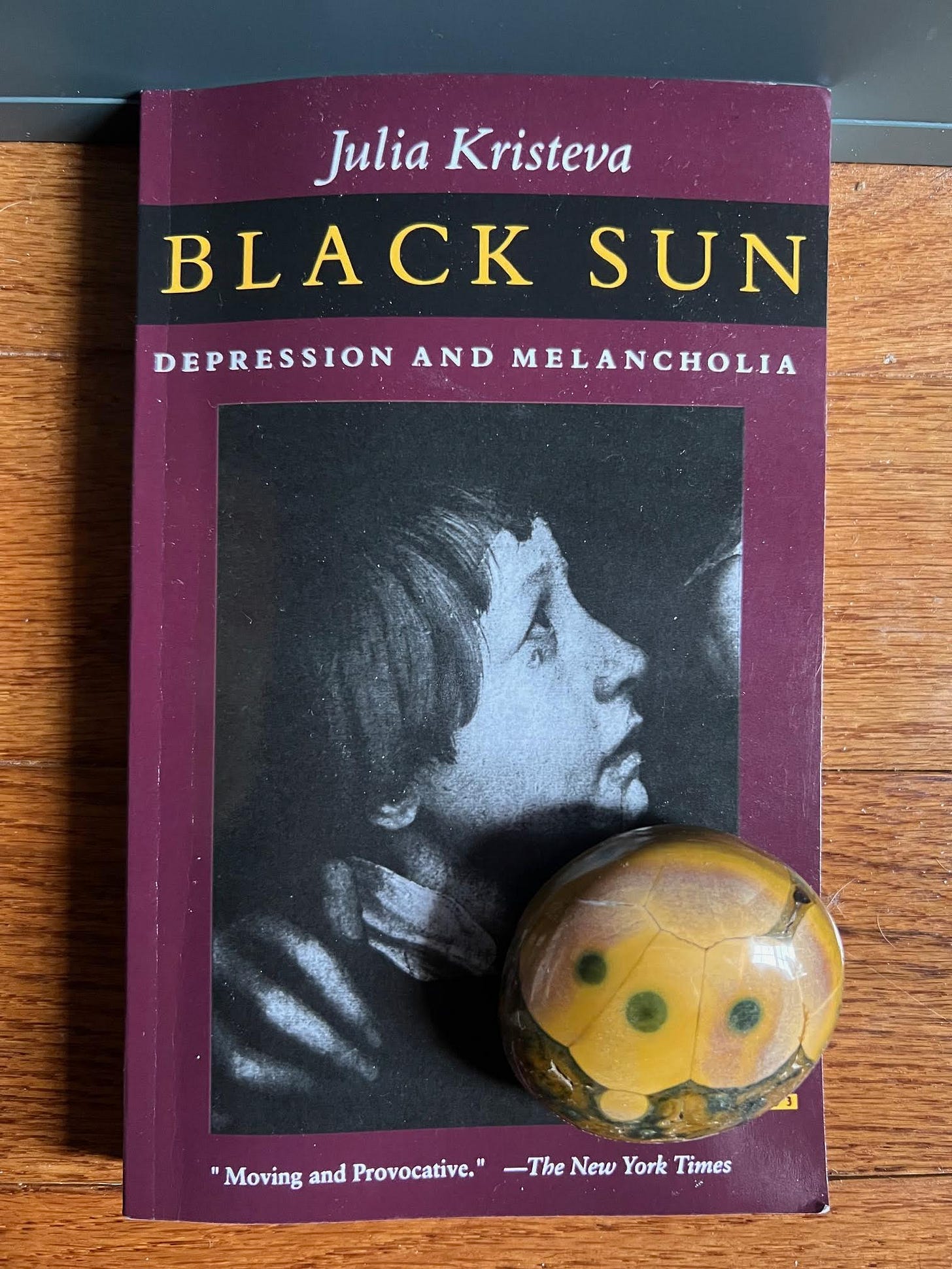Julia Kristeva's Black Sun
Snowbound thinking-out-loud on the Bulgarian-French philosopher's landmark excavation of depression and melancholia through the lens of analysis and imagination
It’s snowing Baltimore so have been reading more this week. Last two days I spent hours on the couch reading Julia Kristeva’s Black Sun: Depression and Melancholia, a text I’d had on my wishlist for probably ten years until finally randomly ordering it. Published by Columbia University Press in 1989, the book is a study of the difference between those two titular forms of sadness, and how they define people’s ideation and experience of the limits of life in various forms.
I went through a phase while working on Molly where I read as much of this kind of study as I could stand, and had since felt exhausted of it for obvious reasons. Kristeva has a much different tone than other similarly academic texts concerning trauma and psychoanalysis. Reading her feels “based” as people say, in that she has an incredible ability to distill huge leaps of logic into tight, complex sentences that continue to develop rather than digress.
Keep reading with a 7-day free trial
Subscribe to Dividual to keep reading this post and get 7 days of free access to the full post archives.




